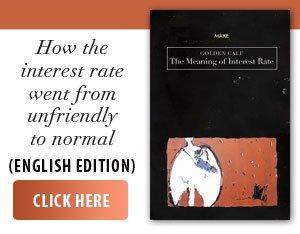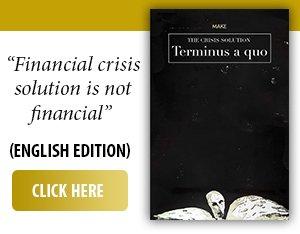Calls from major international organizations regarding environmental protection and pollution control are becoming more frequent. Every fraction of a degree and every ton of carbon dioxide (CO2) counts in limiting global warming, says the UN. The organization points out that this climate crisis is a major barrier to combating hunger, poverty, diseases, and expanding access to basic services. According to a report produced in collaboration with multiple specialized agencies, coordinated by the World Meteorological Organization (WMO), CO2 emissions - a consequence of burning fossil fuels - increased by 1% globally in 2022 compared to 2021. This is mainly due to the increased consumption of oil and the recovery of air transport. Preliminary estimates for the period January-June 2023 indicate a new year-on-year increase of 0.3%. Science has determined that in order to keep warming below 2 degrees Celsius (preferably limiting it to 1.5 degrees), global greenhouse gas emissions must be reduced by at least 30% by 2030. Reality conflicts with this intention, and according to current trends, planetary warming is projected to reach 2.8 degrees Celsius by the end of the century if "emissions are not reduced immediately and on an unprecedented scale," the report states. Experts have measured the impact of the climate crisis on the so-called "Millennium Development Goals," which all countries in the world have committed to achieving by 2030. These goals include eliminating hunger, access to clean water and basic sanitation facilities, as well as a significant reduction in poverty. However, as things stand, only 15% of these goals will be achieved. According to the predictions in the report, approximately 670 million people could suffer from hunger by 2030, in part due to the increasing number of extreme weather events affecting food production. To limit the damage, the report proposes investments in science and meteorological, climatic, and hydrological services throughout the entire food supply chain, enabling farmers to make wise decisions regarding crops, planting, and seeding. Early warnings are essential in this reality, and if implemented by 2027, they will save many lives (people prepare and mitigate the impact of potential disasters) and the livelihoods of entire populations. However, half of the countries either do not have such a system or have serious deficiencies.
Water will be one of the most valuable resources in the coming decades, as this resource will be subject to pressures (changes in precipitation, evaporation rates, and water storage), but over 60% of countries have weak hydrological monitoring capacity, according to the report. Given this, the report emphasizes that technological advances such as drones, artificial intelligence, and space technology can help take data-driven water management measures.
Pollution and the exploitation of natural resources by humanity continue to push Earth beyond its resilience capacities: six ecological thresholds are currently exceeded, and two more are on the brink of being exceeded, according to an update published Wednesday of a landmark study on the concept of the nine "planetary boundaries," AFP reports. Climate change, deforestation, biodiversity loss, the quantity of synthetic chemicals (including plastics), freshwater scarcity, and the nitrogen cycle balance are the six boundaries that have largely been crossed, according to the study conducted by an international team of 29 scientists. Two others - ocean acidification and the concentration of fine particulate pollutants in the atmosphere - are close to the alert thresholds. Only the state of the ozone layer is well below, with a comfortable margin. These "planetary boundaries," corresponding to thresholds that must not be crossed in nine areas so that ecosystems can evolve in a "safe operating space" to keep Earth habitable, were defined in 2009 by the Stockholm Resilience Centre. Debated since its inception, this concept of "planetary boundaries" has gradually become a reference in Earth system science, mentioned in reports by the United Nations Intergovernmental Panel on Climate Change (IPCC), and its influence has extended into the world of politics and economics. In 2019, only global warming, species extinction rate, and the nitrogen cycle had exceeded these thresholds. "Through the planetary boundaries, we identify the important processes that keep Earth in the living conditions that have prevailed for the past 10,000 years while humanity and civilization have developed," explained the study's lead author, Katherine Richardson, a professor at the Globe Institute in Copenhagen. The study published last week represents the second major update since 2015. "We are still moving in the wrong direction (...) and there is no indication that any of these boundaries - except for the ozone layer, which is slowly recovering after the banning of chlorofluorocarbons - are starting to move in the right direction," said Johan Rockström, director of the Potsdam Institute for Climate Impact Research (PIK). "This means that we are losing resilience and endangering the stability of the Earth system," added the co-creator of this concept. Regarding biodiversity, the acceptable limit would be a species extinction rate ten times higher than the average rate of the last 10 million years. However, in our times, extinctions are occurring at least a hundred times faster, or ten times more than the recommended threshold. Regarding climate change, the adopted limit is the concentration of CO2 in the atmosphere. This remained very close to 280 parts per million (ppm) for at least 10,000 years before the industrial revolution. However, in 2022, it reached 417 ppm, well above a safety limit defined in the study at 350 ppm. Thousands and thousands of artificial chemical compounds - microplastics, pesticides, nuclear waste, or pharmaceuticals that pollute the environment - have been quantified for the first time. And the limit is largely exceeded here as well. The study highlights, among its most important findings, that different exceedances of the boundaries reinforce each other, with a crucial link between the increase in CO2 concentration and the deterioration of the biosphere. "After climate change, the integrity of the biosphere is the second pillar of our planet," said Wolfgang Lucht, head of Earth system analysis at PIK. "Currently, we are destabilizing it by taking too much biomass, destroying too much habitat, and deforesting too much," he added. However, in some areas, the situation can be brought back below the alert thresholds, encouraging the study.


















































